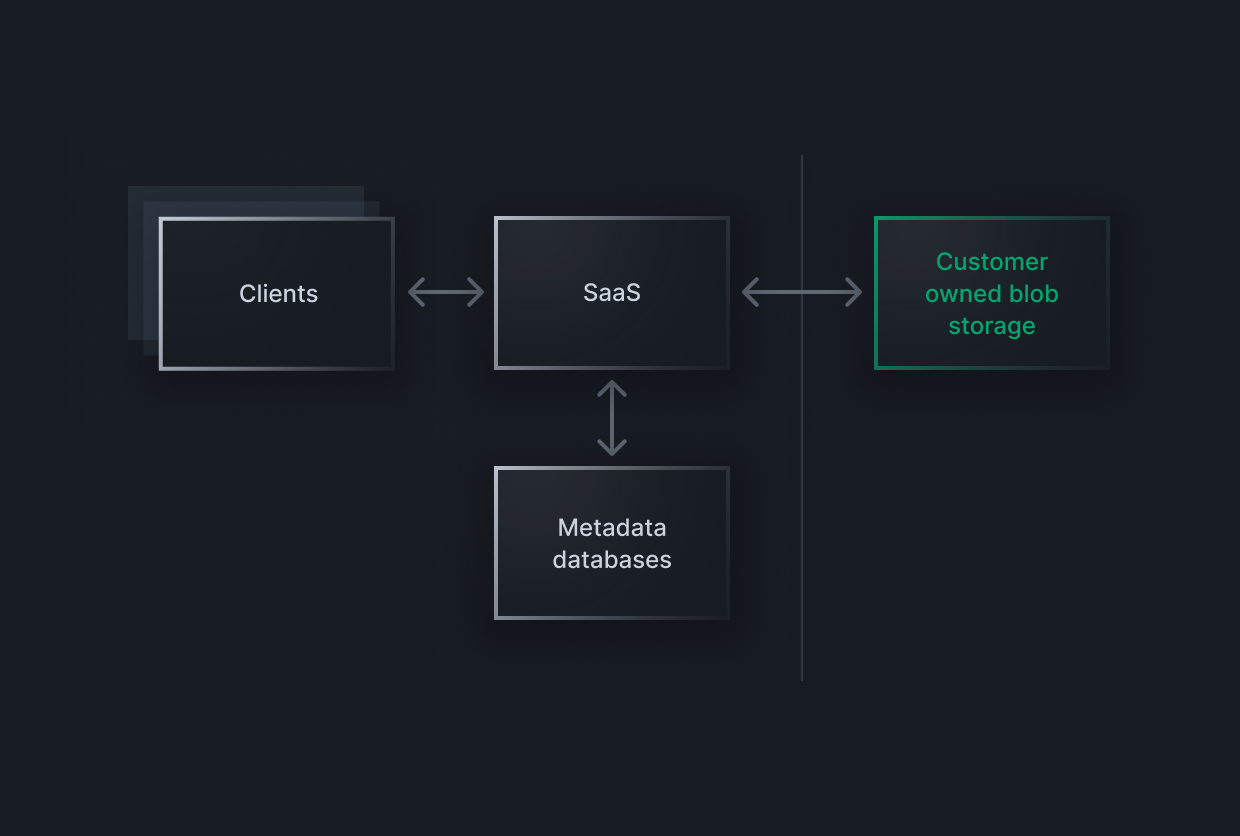Announcing bring your own bucket for bitdrift Capture
Following up on our SOC 2 achievement, we are thrilled to announce support for bring your own bucket (BYOB) across AWS S3, Azure Blob Storage, and Google Cloud Storage. With BYOB in bitdrift, you can take advantage of bitdrift's radical new take on observability to get better visibility, squash bugs instantaneously, and build better apps – all while maintaining total control of your log data at rest.

At bitdrift, we have a very different take on observability: on-device intelligence. Instead of sending loads of expensive telemetry data only to later sift through it for a few precious insights, we couple a sophisticated device SDK, local storage, and real-time control via our control plane SaaS, in order to dynamically fetch only the data that is needed in order to understand customer behavior and solve problems quickly. We give you 1000x the observability at 0.01x the cost. bitdrift’s architecture means that we are uniquely positioned to grow with you to unlimited scale: from startup all the way to the Fortune 50.
Modern enterprises are increasingly having to navigate a complex set of compliance challenges around data ownership and control, especially when utilizing both public cloud and additional SaaS vendors. While modern SaaS services undoubtedly provide tremendous enterprise value, storing sensitive data outside the corporate perimeter can be a tough sell for security teams. At the same time, control planes like bitdrift are sufficiently sophisticated that asking large enterprises to run it themselves “on-prem” is also a tough sell. What to do?
 Not surprisingly, bitdrift’s underlying storage architecture is also built on top of blob storage. The above diagram is a simplified version of the bitdrift SaaS.
Not surprisingly, bitdrift’s underlying storage architecture is also built on top of blob storage. The above diagram is a simplified version of the bitdrift SaaS.
 In the BYOB architecture, the enterprise customer provides the blob storage while bitdrift continues to independently run the rest of the control plane as a SaaS. This has the following benefits:
In the BYOB architecture, the enterprise customer provides the blob storage while bitdrift continues to independently run the rest of the control plane as a SaaS. This has the following benefits:
Rise of the blob store architecture
In recent years, almost every modern database is being built with what might be called a “blob store first architecture.” In this architecture, the only cold storage location for data is a blob storage system such as AWS S3. Database nodes may use local storage and RAM for caching, but no data is permanently kept there. This architecture is appealing as it allows for effectively unlimited storage size, relying on the data replication, redundancies, and encryption at rest provided by the blob storage system, greatly simplifying many aspects of database administration and operation.
- Clients maintain a real-time connection to our SaaS that is used to both send telemetry and receive command and control instructions.
- Various metadata databases are used for indexes and storing summary statistics. These indexes contain no logs, session replays, or anything else that might possibly include PII.
- Logging data is written directly to cold storage in a highly efficient packed and compressed format.
- When a session is viewed in our UI, it is “hydrated” from cold storage, which decompresses and unpacks the relevant logging data for the session, and repacks it in a session specific format that is easier to search and paginate, even if the session contains hundreds of thousands of logs. This data is directly consumed via our SaaS for display in our UI.
BYOB

- The customer controls IAM access to the log data directly.
- The customer controls versioning and backup policies for the log data.
- The customer controls any other relevant compliance policies for the log data such as scanning, data locality, etc.
- The customer does not have to run the rest of the SaaS at large operational cost.